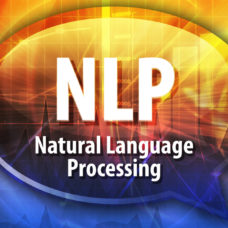At the Belfast Zoo in Northern Ireland, chimpanzees used a felled tree as a makeshift ladder to break out from their enclosure.
Caught on security footage, the chimps’ daring escape happened while the zoo was open to the public.
Chimpanzees are our closest ancestors, and their intelligence is often underestimated. We know that, like many other species, they can transmit information from generation to generation. They can also communicate quite effectively using sign language.
But now, research on chimps may have discovered something even more interesting about their use of language.
The Universal Math of Communication
Zipf’s law of abbreviation, named after linguist George Kingsley Zipf, highlights the principle of “least effort”, which helps us apply an effective use of language.
The top twenty words in English ranked by frequency all don’t exceed four letters – like the, be, and and.
To communicate effectively, the way we say something is as important as what we say, if not more so.
The human linguistic system, across all languages in the world, follows specific communication principles other than abbreviation.
Another communication law is Menzerath’s law, so-named after phonetician Paul Menzerath.
Menzerath’s law states that the large linguistic structures are made of smaller blocks.
Previous research showed that there’s a negative relationship between the frequency and duration of vocal sequences chimps use.
This universal efficiency-based communication system has also been proved with other animals, like dolphins and macaques.
Like Humans, Like Chimps
Improvising a ladder to escape human captivity is another example of primates’ intelligence.
Like some other primates, chimps can also display human-like facial expressions, like cracking a smile.
But perhaps where chimps’ brain shines best is in the communication area.
A neww study on the non-verbal communication system of chimpanzees reveals it shares more similarities with human speech than previously thought.
The research was conducted by Professor Stuart Semple and masters student Raphaela Heesen from Department of Life Sciences at the University of Roehampton in the UK.
Semple and Heesen analyzed thousands of video clips of chimpanzees playing in Uganda’s Budongo Forest Reserve.
In close quarters, chimpanzees use rely more on physical gestures than on vocal sequences like panting and hooting.
They found hints of both Zipf’s and Menzerath’s laws in the communicative gestures of chimps.
The team “measured the length of over 2000 play gestures, of 58 different types, and found that – just as predicted by the two linguistic laws – more frequently used gestures were shorter in duration, and in longer sequences, the average gesture duration was also shorter.”
Read More: Scientists Theorize Brain-to-Brain Communication for the Near Future
Although the human linguistic system and chimps’ gestural communication are very different, they’re “underpinned by the same mathematical principles” as the present study shows.
If you’re wondering what a talking ape would sound like, we have something close.
A group of biologists who set out to find out why monkeys can’t talk produced a simulation to vocalize a macaque named Emiliano.
https://soundcloud.com/georgedvorsky/macaque-will-you-marry
Terrifying as it sounds, it adds to the argument that communication is not limited to just the use of vocal cords. Chimpanzees and all other animals use hand and face gestures to a level of efficacy not unlike our own. This could be something that researchers could focus on in relation to the development of AI communication, especially in the development of chatbots or AI companions.



















Comments (0)
Most Recent